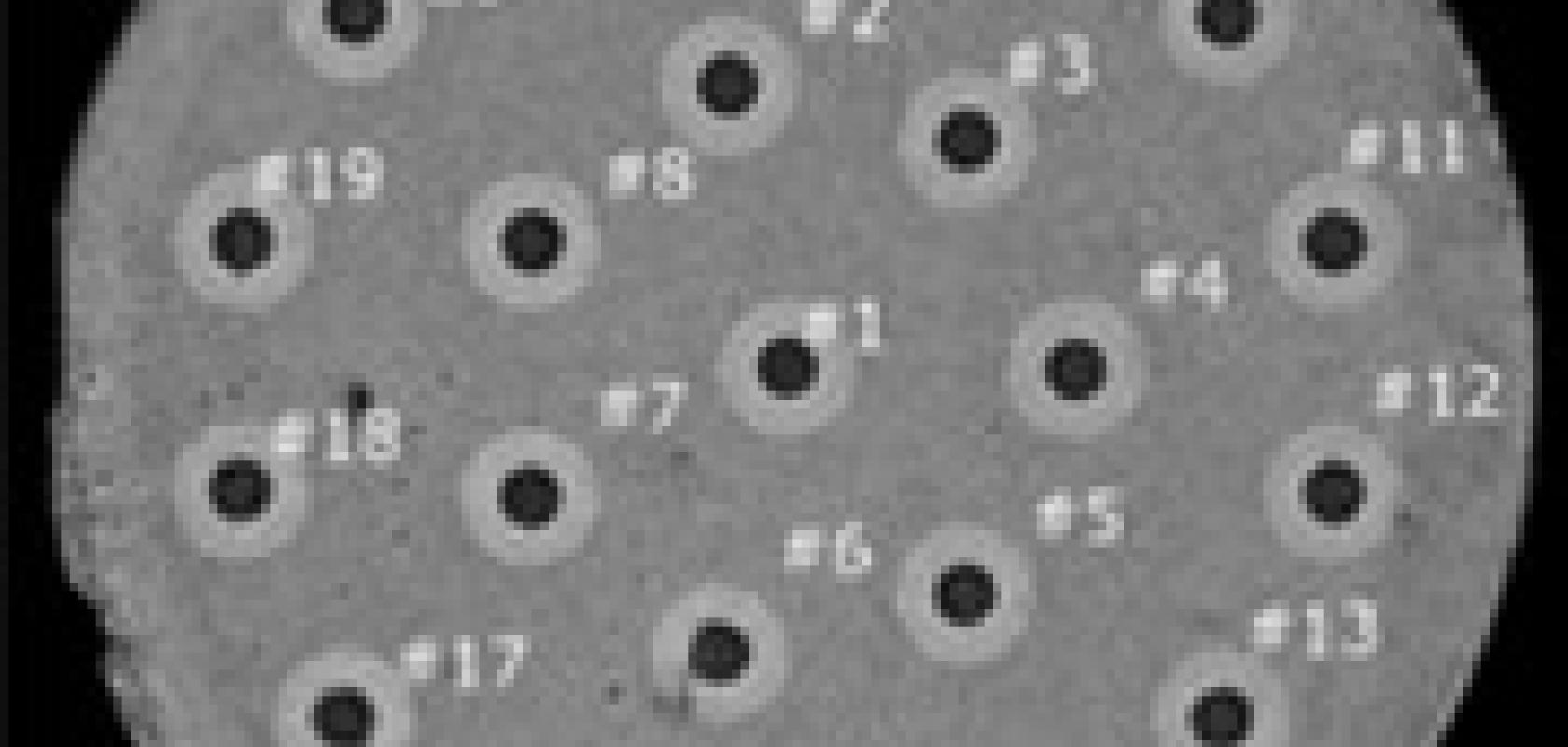Researchers from Japan and the US have achieved a new record for high-capacity transmission over a single optical fibre.
Using a homogeneous 22-core singlemode multi-core fibre from Sumitomo Electric Industries, Japan’s National Institute of Information and Communications Technology (NICT) transmitted 2.15Pb/s, which represents an advance over the previous record by more than a factor of two.
The experiment also employed a high-performance optical frequency comb light source manufactured by research and development consultancy RAM Photonics LLC that is able to simultaneously generate multiple wavelengths covering the entire C and L bands.
The paper on this study was accepted and presented as a post-deadline paper at ECOC 2015 at the end of September, where it was regarded as the best post-deadline paper and was awarded the Nature Photonics Award.
Researchers are studying spatial division multiplexing (SDM) as a promising transmission method for future high-capacity networks. Japan’s NICT has extensively researched multi-core fibres, which are a new class of optical fibre incorporating multiple parallel but independent cores.
Until now, 19 cores was the highest number of cores demonstrated in multi-core fibre. More cores means an increased likelihood of cross-talk, and suppression of signal cross-talk between the cores requires advanced fibre design and fabrication processes.
For this experiment, engineers at Sumitomo Electric designed and fabricated a 31km-long, homogeneous 22-core singlemode multi-core fibre. The length of fibre was spliced from five separately drawn sub-spans.
The test set up relied on a wideband optical comb source to generate hundreds of narrow linewidth signals on a 25GHz-based grid that spanned both the C and L bands. An optical comb source was chosen for its superior performance compared to existing laser arrays – namely narrow linewidth, low noise, frequency stability, mutual coherence, and low power consumption.
In the experiment, each wavelength line from the comb source was treated as a spatial super-channel. Each spatial super-channel was encoded with 24.5Gbaud polarisation-multiplexed 64-state quadrature amplitude modulation (PM-64QAM) to reach a record per-core capacity of 97.75Tb/s, assuming a 20 per cent forward error correction (FEC) overhead.
Some 399 of the available 402 spatial super-channels in the experiment had a bit error rate of below the FEC threshold, which gave the experiment a raw transmission capacity of 2.58Pb/s, reducing to 2.15Pb/s data rate once the FEC overhead is taken into consideration.
However, while the research points the way towards ultra-high-capacity optical networks based on multi-core fibre very, there’s still much work to be done to develop practical system components, including improvements to fibre manufacturing and splicing, and transmission equipment that can exploit the parallelism of the system design to create cost and power savings.
- - -
Reference: B. J. Puttnam, R. S. Luís, W. Klaus, J. Sakaguchi, J.-M. Delgado Mendinueta, Y. Awaji, N. Wada, Y. Tamura, T. Hayashi, M. Hirano and J. Marciante, “2.15 Pb/s Transmission Using a 22 Core Homogeneous Single-Mode Multi-Core Fibre and Wideband Optical Comb”, in Proc. ECOC2015, PDP.3.1.
Image: Cross-section view of 22-core multi-core singlemode fibre


